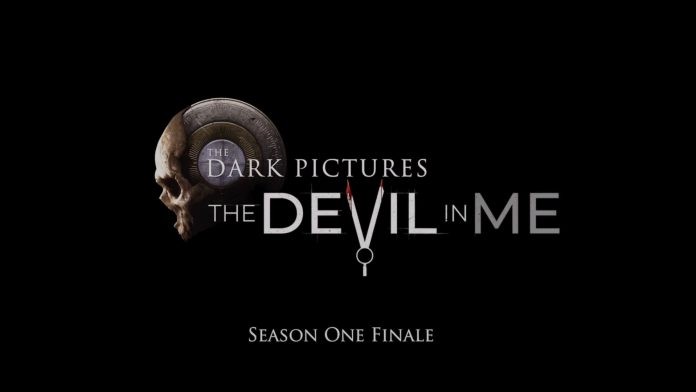Last month I had the opportunity to sit down and talk with composer Jason Graves about his work on the latest entry in Supermassive’s Dark Pictures Anthology Series: The Devil in Me.
After getting to talk to Jason Graves about his work on the previous entry in the series, House of Ashes, I was delighted to get the opportunity to talk with the composer about The Devil in Me. The latest entry in The Dark Pictures Anthology served as a chilling survival game that deals with the twisted legacy of H.H. Holmes.
Graves has composed the music for most of Supermassive’s games dating back to Until Dawn in 2015. He’s also composed for the Dead Space series, Far Cry Primal, and 2013’s Tomb Raider, just to name a few and we had a blast talking about how he took his work to another level for the anthology series’ finale.
When you found out this one was going to be in the Murder Castle and H.H. Holmes, what did you think of all that? Because for a dark series, this is one of the most twisted locations they’ve come up with yet.
It’s always interesting. Okay, so when I was working on House of Ashes, Barney Pratt is the audio director for Supermassive. I’ve been working with him for something like 12 years now, we’ve done five games together. I think I was just getting started on House of Ashes. And he’s like, “By the way, in the next game, we’re gonna be doing XYZ and PDQ.” And I was like, “Okay, that’s great. Tell me about that later, I need to wrap my head around House of Ashes.”
What I love about their stories is most of the times they have a prologue, and most of the time, that prologue is extremely relevant to the rest of the game. But it’s always [set] earlier that week, or 3000 years earlier, or in a different part of the world or 50 years before the rest of the game takes place. It’s always like a maze to navigate. The Devil in Me would be a perfect example, where I don’t want to give away a lot of spoilers, but it’s like, oh, this character and that character and not this character? There’s a lot of twists and turns and great stuff. But when you’re getting it in a five minute synopsis, and your composer brain is thinking about how to make the music work; yet still understand how the plot works. It can be really over overwhelming, but in a good way, because it all makes sense in the long run when I’m working on it.
At the beginning it’s always more about the initial first blush of emotion that I get when they start talking about H.H. Holmes. One of my daughters is a true crime fanatic and she just about lost it when I told her that H.H. Holmes was the the subject of the next Dark Pictures game! She’s like “Oh my gosh, did you know he did this?” And I was like, “Yes. And that’s going to be in the game.”
So she actually educated me a lot on H.H. Holmes himself and what an incredibly terrible, twisted person he was. Also how the Castle worked and all that, so I actually had a little more backstory going into this one. And I appreciated it because it had a different take from the previous Dark Pictures games in the sense that this was just a guy. It was a human, an awful human being, killing people. And there were no supernatural elements, or space things, or aliens or witchcraft or anything like that. It was just people. And that in and of itself was sort of an interesting approach.
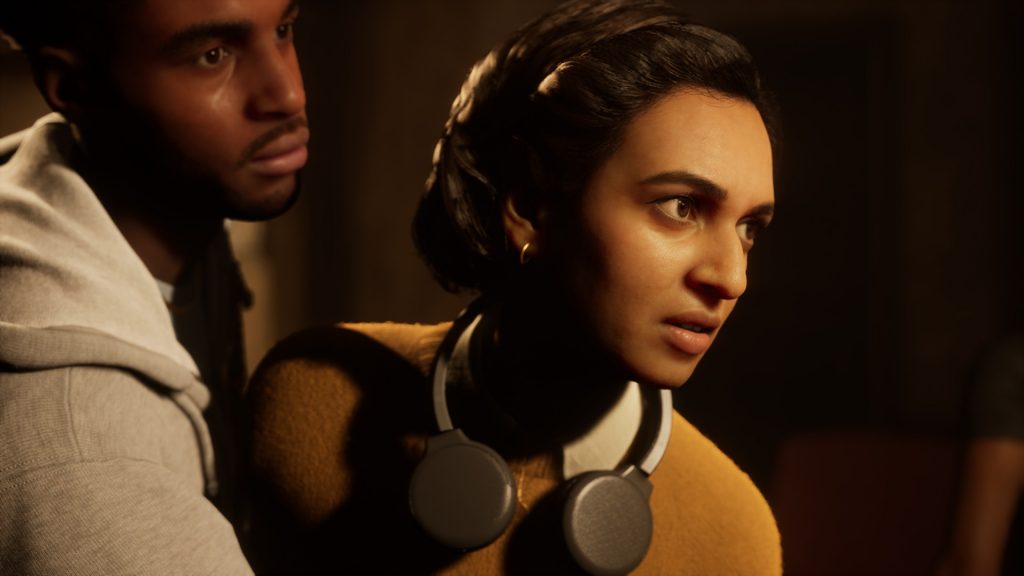
With The Devil in Me being billed as the season one finale of the anthology, did that lead to a push to make the music for it that much bigger?
No, not really. And I only say it like that, because honestly, every game I work on with Supermassive is always like, okay, what can we do? This is Barney and I talking collectively, what can we do to amp up the music and the sound design? It’s one thing when you do it for the second game, but then you do it for the third game. Now we’re into the fourth game. Each game is unique in its presentation and unique in its atmosphere. That’s actually a big leverage for Barney and I, to figure out how to make it special and how to keep ourselves entertained, but also keep the fans and the players really absorbed into the world of the game.
Do you have a role in determining where jump scare spots go? Since there’s normally a musical moment that goes with most of them.
Not where they go, like in the game, and a lot of times jump scares and things really specific like that go through a lot of QA. They go through a lot of quality testing and stuff because they want to not have too many but have enough and have them placed the right way.
I actually used to do a lot of specific stingers, like crazy kinds of stingers. Yeah, but I write the music a little differently. Now, I do these longer suites and the suites have stingers built into them either at the beginning at the end, in the middle, on a transition from one section to the next and Barney is able to just extrapolate whatever he thinks will work for a stinger and put that into the game.
So other than writing it in the context of a greater cue, I wouldn’t say I don’t have say over where they go, because Barney is always very intentional. He always wants to make sure that I’m happy with the way the music’s implemented. So I know how it’s being implemented, and I know where it’s going. I just don’t have the time or the capability to control it that much. It’s more Barney’s personal taste and ear guiding how all that works. And when there is a stinger, right? Sometimes, some things happen. Like in The Devil in Me where you could have a stinger there, but if it was there, it might not be as effective the second time you don’t want to have stinger fatigue. So that’s a big thing that Supermassive takes care of when they’re testing their games.
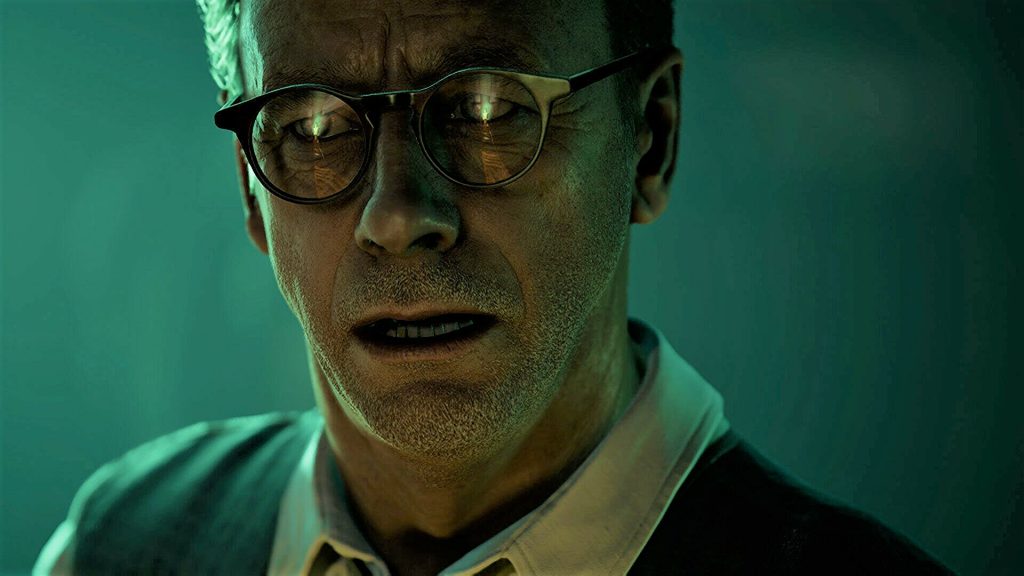
One thing I noticed as I was playing through The Devil in Me, is every now and again, there’s a record player that starts playing and you hear these classical pieces? Did you have a hand in selecting those? Or did someone else have that responsibility?
That was all Barney Pratt from Supermassive and the creative director. As a matter of fact, the whole premise of using that sort of diegetic music (which for the listeners is just a fancy word of saying music that is physically occurring), like in the scene or in the room with the character…that was like so many other things was taken specifically from the viewpoint of H.H. Holmes and what a dramatic Grandmaster he considered himself. I think that everyone really agrees [with] the idea he would listen to this really classy opera, while brutally killing people was a wonderful Hannibal Lecter-esque twist on his character.
How did you work together to decide which parts of the game would have music and which wouldn’t? Because as big as the music gets in some spots, I also notice a number of sequences that seemed to be almost dead quiet.
Yes, and again, I didn’t have anything to do with that. That was up to Barney, and he has a team of people implementing the music. Now, the games are wildly different. Every game, obviously, is unique but I could take another game that I just finished last week, where I wrote about an hour’s worth of music, and implemented all the music. So it was literally my decision on which parts of music we’re playing. If I didn’t want to have the violins play for this part, or I just wanted to have the drums playing by themselves, but not loop and then go to this…like all those little details. When the camera turns over here, I’m going to make this cue start playing. I don’t want to do a jump scare here, that sort of a thing. I can contrast that with the Dark Pictures games, where I’m just sending lots and lots of granular stems, like individual recordings of each instrument from the songs over to Barney, and I have to let it go.
Because it’s just physically impossible for me, let alone a single person to be responsible for implementing the music in those types of games. Because the Dark Pictures are all these choose your own adventure style things. There’s 1000 different choices you can make. And therefore 1000 different musical options of what happens this following the gameplay.
[For] Until Dawn, I wrote about two hours of music. I think it was 12 to 14 hours of gameplay [for Until Dawn] and Barney [worked] by himself, because back then he was the only person in the audio department. He implemented—I should say he edited and implemented—all the music and it turned out to more than 12 hours of music that he extracted from my [score] and it literally took him about two years to do that. It took two years because Until Dawn originally was going to be a PS3 title. And then PS4 was announced.
I remember Sony said, “Hey, Supermassive can we make this a launch title for the PS4?” So everything was delayed by a year. So Barney did have some extra time he wasn’t planning on. But that just meant that he could put more TLC into it. Now with these games, I think it’s Barney sort of overseeing everyone, but he has a team of four people that are doing nothing but implementing music and some audio sound design as well. But it’s more than a full time job. Because there’s just so many options in these games.
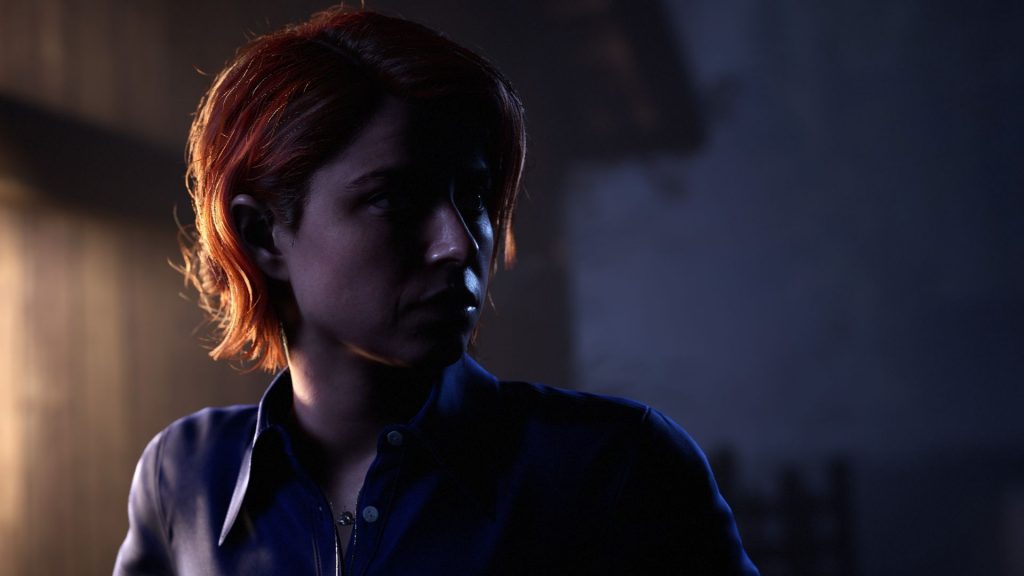
So you don’t have any hand in the implementation?
Not at all. No, no, no. I mean, Barney will send me gameplay captures before and after the music. And a lot of times he’ll send me [a file] and it’s got music I wrote from another Dark Pictures game or for another level in The Devil in Me and I have to email back and say, “This is great. Can you please mute the music and do another capture because I can’t watch a 10-20 minute walkthrough of this new level in the game and figure out what the music’s gonna sound like if there’s already music playing.”
It’s not the same when you turn off the audio. I want to hear the sound effects and the dialogue and all that stuff. But that’s how we keep in touch. And then when I send the music, he will extract it and edit it out and all the wonderful people over there put it all in there with all the sound effects and then he sends me another gameplay capture [with the] music implemented. Nine times out of 10 I just say it sounds great; thanks for letting me hear it. I usually don’t really have anything else to say other than that.
Do you ever see the motion-capture acting part for reference, or is it strictly gameplay captured footage?
It’s 90% of the time gameplay capture. I do like there’s a developer I’m working with right now. I’ve got a computer that they sent me that has the game on it. It gets daily updates, and I can send the music and I can pull it up on my big screen in the studio and I’ve got a controller for Xbox, and I can play the game, and hear how the music’s being implemented in real time, which is really great.
Most of the time, it’s more straightforward for me to have movies, just because it’s the quickest way to get the same result. I can put the movies in my music program, and score them, like our scoring a TV show or a film or I can just have the movie on another screen looping. And it’s like an exploration thing: let’s say they’re walking around the outside of the hotel for The Devil in Me, traversing and seeing the dog and doing all that stuff, I can just let that loop in the background while I write the music that would be playing there and just gel with the overall vibe and see how it makes me feel more than if I’m holding a controller and playing and thinking about what I would be doing with the music. It’s easier for me to react musically speaking while I’m watching it.
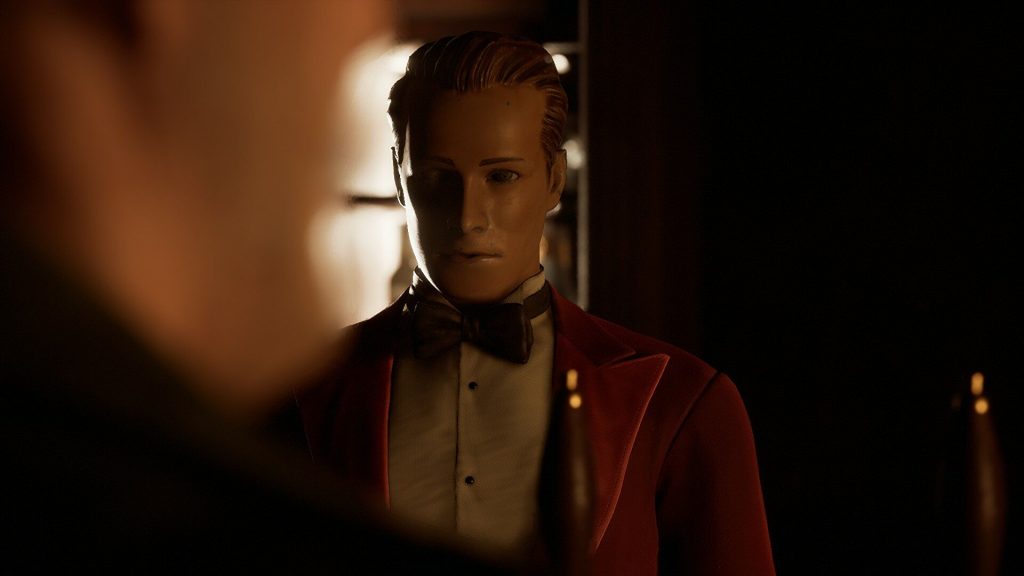
When you write the music for these levels, are you taking into account the branching narratives? Or is that done by someone else?
[That is] definitely done by someone else, and that’s only because sometimes they don’t even know how many options there are, when I’m writing the music. Usually, music composition, if in my opinion, if done properly, is running parallel to the production of the game. So they’re working on a level inside the hotel, and I’m working on some music inside the hotel as well. And we can take inspiration from each other.
I know I’ve gotten feedback from developers before where I wouldn’t be either at the same time, or slightly ahead of people doing lighting or something. And I would be told that, when they were programming the final parts of that particular level, they were listening to the score that was going to be there and using that as inspiration. Same thing with mixing all the audio, so it’s really about being in a trusting relationship. And that is my relationship with Barney 1,000%. Relinquishing creative control once I do, sort of my thing, and the soundtrack for The Devil in Me, that’s on Spotify, and YouTube music and all those places.
Those are, I think, almost all of the cues that I wrote for the game, as I sent them to Supermassive. About seven or eight years ago, I started writing in more of “soundtrack” or film music kind of style, where I think the music serves the game better. If I’m writing it, like a lot more going on than I’ve been given, like information for. So anything like I was gonna pull up the we pull up Spotify, any of the any of the cues, the opening cue, I remember is called Du’Met.
That was literally the first thing that I wrote, and it was very programmatic in the sense that all I knew was Barney said it was music [they were] going to use throughout the game for his character. And they were going to use it at the beginning, especially when arriving at the island and trying to figure out what’s going on. And that’s what I sent him. It’s a four-five minute track that just kind of runs all over the place and gets really big and gets really quiet and builds. And it has all the main themes in it, all the main ticking mechanical noises and everything. The whole score is condensed into this main theme, but also, that’s how I like to send the cues to the developers and it turns out they get a lot more variety of emotion. runs out of cues that are written this way than just like, “Okay, give us a two minute main theme that will play on the main menus or something like that.”
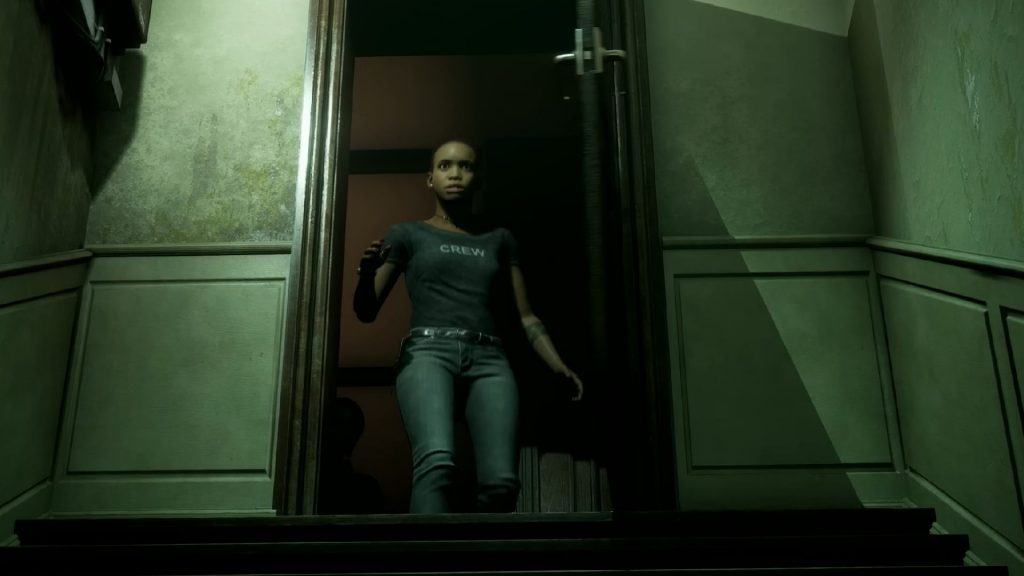
So there are themes for characters? I was feeling there had to be at least several because I noticed once the game story moves on to the island, there’s this whole shift and it gets very creepy. I mean, I’ve asked about themes in general, but does that include one for the Murder Castle itself? I feel like the building has its own theme.
I think that’s an astute observation. Because there’s kind of it’s like, you have themes, which I guess, speaking of themes, we’re talking about, harmonic or motivic, sort of things like some sort of a melody, or some sort of a chord progression. The origin of the entire score came from this film noir musical leaning, where Barney and I were talking about how to complement and contrast the classical music pieces.
For this one, I think it was Barney who said that they really liked the sound of the score to Psycho, like how it’s just strings. And it’s very black and white, they’re muted strings, except for the shower scene. The harmony is very disjointed, but darkly beautiful in a way. Both the chords and the way the instruments sound throughout the score it’s a very 50’s sounding score, the orchestra was really upfront and dry, and in your face, but with modern elements of synthesizers and mechanical sounds and stuff. But there’s a chord progression that happens at the beginning. And at the end of a couple of specific cues, that’s my Murder Castle theme, where it’s not, it’s not necessarily playing notes, it’s just playing chords, but the chords are very disjointed and sounds like they’re attractive to me, but they’re also dark and I was trying to capture the crew’s excitement over going to this place.
It’s so big and it’s so beautiful, and this is really exciting, but there’s an underlying sense of something might be wrong here; like what exactly is going on? The main theme is a very simple four note, like ascending bom bom bom, dum dum dum dum dum, that plays everywhere in the score, and you hear it everywhere in the game as well. Originally, I was thinking of doing three notes. I mean, two notes, because Du’Met, that was two syllables, or doing five notes for the five letters in his name, but none of those really worked. And I played that I’ve got a harp and a piano here. So most of the time that’s on harp and piano, and it’s all alive and very natural sounding and got that upfront sort of 50s vibe.
Would you say the different characters have themes?
No. In the past, we’ve done relationship themes where two characters who can or cannot sort of form an alliance or maybe a romantic relationship, there might be a theme for them. We did that with Until Dawn, and we did that a little bit like with Man of Medan. The games keep getting, they’re shorter. So they’re shorter than Until Dawn, they are six to seven hour gameplay experiences. But they are a lot deeper than Until Dawn in the sense that it’s an incredibly high replay factor because there’s so many different choices you can make. And those choices sort of compounded our need for themes.
So it was easier to do something like a general love theme, which I think is what the hotel track might be, which started off as the theme for the newlyweds having a pillow fight and teasing each other and everything you hear in there. But all it really is, is a less threatening version of Du’Met’s theme, because the idea is that he’s basically reigning over everything. Like he’s seeing everything. He’s controlling everything, even when it’s playful and fun. Or the film crew’s having a positive pick me up motivational speech at the table. The theme plays there as well. But it’s still doing that theme. It’s just disguised in this not quite so threatening clothes.
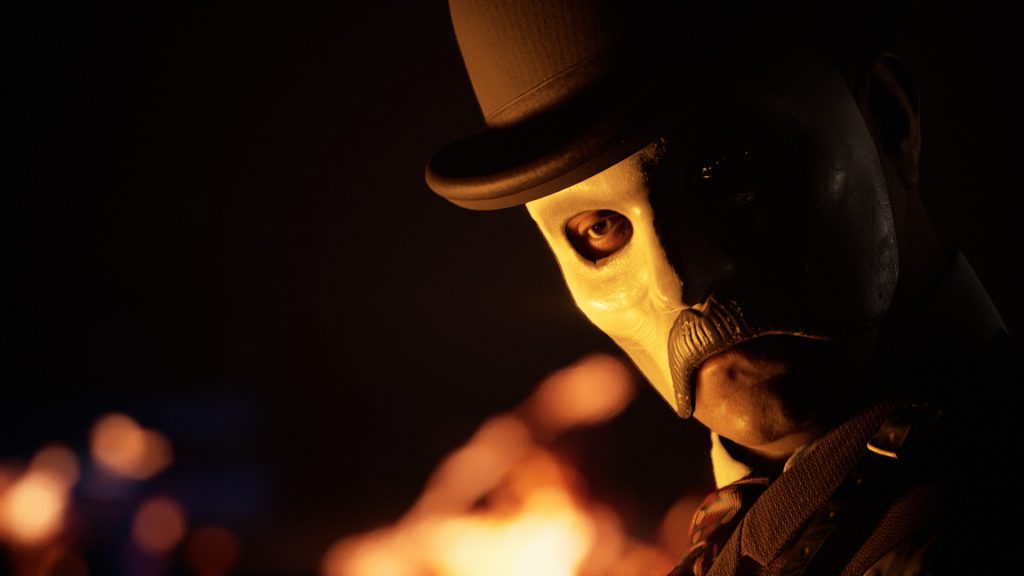
So the main instrument were strings in the game.
Yes, strings, lots of piano and harp, lots of synthesizers as well. But that’s kind of more of the modern edge. I like the idea of how the hotel looks old, right? Like it’s made up like this classic hotel from the late 1800s. So to me, that’s sort of the film noir [style]. I know, that was the 1950s, but it’s a throwback kind of sound.
Then the inner workings of the hotel, and especially the heart of the hotel that you eventually see in the game is very high tech, very sophisticated. So that’s the synthesizers and kind of all the modern distortion and skipping. That’s the second aspect. And then the third is really the animatronics that are throughout the hotel and all the mannequins and things which is why the very first track of what’s the first thing you hear you hear a record needle drop, and you hear this ticking like mechanical kind of sound. And that was just my literal tongue in cheek wink and saying like, okay, there’s going to be a lot of classical music and stuff playing off of records, and there’s going to be a lot of animatronics. And here’s the main theme, and I just kicked it off with a bang.
How much time was spent scoring The Devil in Me then?
Usually each game is about 12 months. It’s not 12 months of solid work, instead it’s 12 months of on and off work because as I mentioned, I like to work in parallel with the development team, so that we can both be inspired by each other’s decisions and creative work. It was over a year just just on and off. I usually write 10 to 12 minutes of music a week. So I would do, probably a cue for The Devil in Me and in a day or two, and send that to them and then just work on some other things. And then another week or two later, get implementation and feedback from that first cue and do a second cue.
The Dark Pictures Anthology: The Devil in Me, is currently available for PlayStation 5, PlayStation 4, Xbox One, Xbox Series X and Series S, and Microsoft Windows. I want to thank Jason Graves for taking the time to speak with me about the music of the game, and I hope you enjoyed reading about it.

